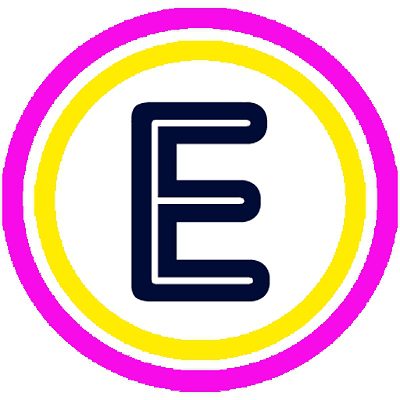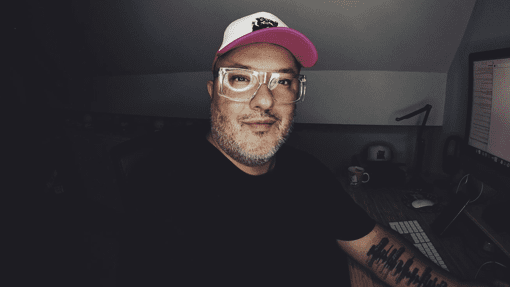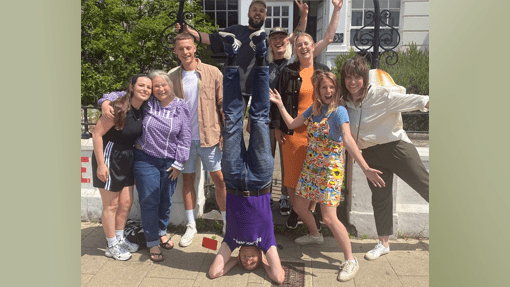Overview of Stockholm Fringe Festival (STOFF)
Oldest and longest-running fringe festival in Scandinavia.
Stockholm Fringe Festival (STOFF) was launched in 2010 by Helena Bunker, Lina Karlmark and Adam J. K. Potrykus. The 13th edition takes place from the 13th – 17th of September 2022.
We’re all from an artist background – we’d performed at Edinburgh Fringe, won awards at Melbourne Fringe and recognised that the fringe format needed to arrive in Scandinavia. Stockholm was the first and only. The first year it operated out of one venue with two stages to now being the biggest in the Nordics and inspiring other new fringe festivals throughout Scandinavia. STOFF started to coach and co-launch fringe additions in a bunch of other Nordic sister cities, which led to the launch of the Nordic Fringe Network (NFN). Comprising 13 festivals across 7 countries, NFN supports fringe festivals and opens one main artist call a year covering the whole region. While we’re united in the artist call, each festival is unique.
STOFF grew too much in its early years, and organisational stretch marks started to show. The team and crew didn’t grow at the same pace as the festival and administratively it was becoming too complex. It was decided to re-structure to be a boutique festival. In hindsight, we should have joined Eventotron five years ago as we’d have been able to grow and reduce the extra admin. Maybe we would have taken a different approach if we’d had the right tools from the start.
STOFF is a week-long festival – it’s a showcase of innovative work. It is also a networking platform programming lots of activities, workshops and panel events for artists. STOFF always has a huge headline act as a hook and to spread the limelight over the up-and-coming acts. This year (2022) we’re excited to be welcoming back Forced Entertainment with a brand new show.
At the core, we’re left of centre, feministic and punky. One could claim that STOFF’s profile over the years has been somewhat pretentious. Or, serious if you like. In the first fringe festival year, we had nearly no stand-up acts! We’re like a reverse birthday cake, we started with a few slices of performance styles, and have added different genre slices over the years. It’s been an organic process.
Open-access or curated?
Curated but try to be democratic. Curated because it’s too expensive for artists to hire space in Stockholm. STOFF hires the venues and give that (with technicians etc) to the artists we programme. Artists take all ticket sales, apart from the booking fee and we don’t charge an application fee. STOFF has not-for-profit charity status and finances the festival through funding support from local, regional and national governments. We have partners whose support is in-kind; lending equipment, rehearsal space etc.
STOFF is democratically curated across genre, geography, and gender. We look to elevate specific topics which in turn diversifies festival audiences. An example of this was a collaboration with the National Black Theatre of Sweden. Putting people on stage who wouldn’t necessarily be the first to apply to STOFF meant changes across future applications from artists to audiences attending the festival.
We have several projects outside of the main fringe – recently setting up the first phase of a future digital performance culture house (Arena STOFF).
It’s a new project which received funding that helps to feed our all-year-round strategy with fringe offerings online and IRL. We know digital is here to stay, the benefits it provides in terms of access, being environmentally friendly, and global, are endless. It also comes with challenges. How do build and retain online audiences, making performance worth paying for – monetising it better? How do give space for existing gaming audiences in our sphere? How do we best help to keep new digital stages safe, inclusive and community-minded? If readers have an idea about what this future culture house should look like, please register and share your thoughts: https://www.arenastoff.com/
What is your artist callout process?
It starts with the Nordic Fringe Network open artist call in Dec/Jan/Feb, then each festival in the network chooses its own programme. The festivals close to each other discuss programming plans so that artists can build mini-tours. Eventotron has been great for this – you created a whole new way for artists to apply to the Nordic Fringe Network and the majority of the network is now using Eventotron.
“Prior to using Eventotron everything was done via email and google forms. We had monster spreadsheets that nobody could handle.”
This year we did less promotion of the open call than usual elsewhere and still got loads of applications via Eventotron. It saved us a lot of grief in explaining the fringe sector to artists. The more festivals use Eventotron the easier the job of explaining the fringe concept to applicants is!
“The artist call process alone is worth the Eventotron subscription fee. The managing of the show copy and visuals for program listings is the other major drawcard for us.”
How do you work with venues?
We have standard bookings with some spaces that we always work with. We hire venues. Everyone is chronically underfunded in the sector so we try to hire but are usually offered a special rate. The venues are invited into Eventotron to populate their profiles but SF does all the matching events with venues and scheduling. Artists and venues don’t really communicate much at all until the festival month.
Most useful marketing tools?
The website is the most useful tool for marketing the festival. It’s a Squarespace website and then the what’s on / ticketing section is all in an Eventotron microsite but users don’t know that – it all looks exactly the same stylistically.
We used to do a big printed programme but we’re not planning to this year. Press and the website are key. Posters and word of mouth. Branded social media banners for artists to use. Many little streams become a river. In the beginning, artists would arrive and expect the audience to just appear. Now we have more fringe circuit artists who understand that they have a responsibility to market their shows.
What does a successful STOFF look like?
A good year we reach an audience of around 10K. Lots of shows are unticketed, and there is lots of site-specific work, sometimes with tiny audiences (1 on 1 experiences). It’s not about volume but about the quality of the experience. Expect the unexpected – we aim to be a bit weird, bit different – performance you’re not going to get anywhere else in Stockholm.
“Success is when the artists feel they came and had a good meeting with the audience.”
We downsized to a boutique size so that there are enough fringe audiences for everyone. We went too big for several years, nowadays we welcome between 70 – 100 acts/companies performing in small spread-out venues across Stockholm, so reaching local communities in a way we couldn’t at the start because we presented everything in the big main cultural venue. We’ve grown in quality and audience. We’ve also been successful in welcoming more diverse audiences and artists.
How do you communicate with artists?
Eventotron is our one-stop shop for this purpose.
What is your Box Office setup?
One of the main benefits for us using Eventotron is the Super Simple Box Office. Being in charge of our own box office and not being forced into a huge fee-hungry mechanism has made a big impact.
“The support is amazing, if I had to rate your customer service and response time against other services I’m using you guys are in my top 3.”
We’ve tried four different box offices before and none have been nearly as good. We had one issue with a ticket buyer last year. Just one, and that was an issue with Stripe, not Eventotron. Eventotron is saving us hours and hours of labour.
Top Tip
We set up a closed Facebook group for our artists before the fringe starts so they can communicate with each other and get to know one another, share ideas and ways to market their shows etc.
Advice for a new fringe festival manager
- Remember the artists make your festival. They are your client. Treat them right and invest in them.
- Have good agreements and legal contractual documents. Being black and white and nearly patronising people is better than misinterpretations down the line.
- Look after your mental health. Invest in tools to have more time for yourself. Investing in Eventotron has given me more time to look after my wellbeing.





